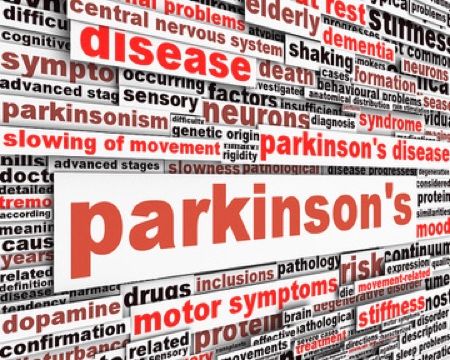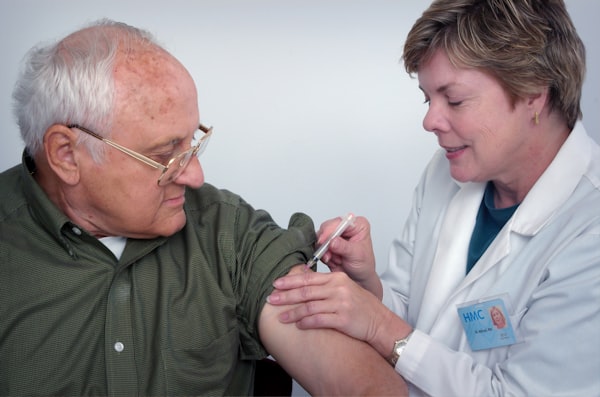What is Parkinson's Disease?

Introduction to Parkinson's Disease
Parkinson's disease is a neurological disorder that affects approximately one million people in the United States. It is caused by damage to the brain cells that produce dopamine, a chemical responsible for controlling muscle movement and coordination. People with Parkinson's often experience a variety of motor symptoms, including tremors, stiffness, and difficulty walking. In addition to physical challenges, Parkinson's can also cause mental health issues such as depression, anxiety, and even dementia. The purpose of this guide is to provide an overview of Parkinson's disease, explain how it can be diagnosed, and outline available treatment options.
Overview of Parkinson's Disease
Parkinson’s disease is a chronic, degenerative neurological disorder that affects movement, muscle control and coordination. It is caused by a gradual loss of nerve cells in the brain, which occurs when a person has insufficient dopamine production. Dopamine is a neurotransmitter that helps with communication between the brain and various muscles and organs throughout the body.
Who is most affected? Parkinson’s disease can affect people of any age. However, it is most often diagnosed in people over the age of 50. People of all races and ethnic backgrounds are equally affected by the disease. Men are more likely to be diagnosed with Parkinson’s than women.
Although researchers still don’t fully understand what causes Parkinson’s disease, there is evidence that genetics and environmental factors may play a role in its development.
What Are the Symptoms of Parkinson’s Disease?
Parkinson’s disease is a progressive neurological disorder that affects a person’s ability to control movement. It is characterized by several physical and cognitive symptoms which can vary from one person to another. The most common symptoms of Parkinson’s disease include tremor, rigidity, instability, slow movement, and impaired responses.
Tremor
One of the earliest symptoms of Parkinson’s disease is a tremor or trembling in the hands, legs, or chin. The tremor usually begins on one side of the body and is most noticeable when the hand is at rest. It may increase in intensity when the person is under stress or emotional duress.
Rigidity
Rigidity or stiffness of the body or limbs is often associated with Parkinson’s disease. This symptom usually begins in the shoulder and neck area and can spread to other parts of the body over time. People with rigidity may feel stiff, especially when starting to move.
Instability
Instability or difficulty maintaining balance is often a sign of the disease. People with Parkinson’s disease may experience falls or difficulty walking. In some cases, extreme instability may cause an individual to walk in a bent-over position, making it difficult for them to walk without assistance.
Slow Movement
People with Parkinson’s disease may experience a decrease in their overall speed of movement. This symptom is called bradykinesia and may cause individuals to have a shuffling gait, drooping eyelids, and a mask-like facial expression. Furthermore, the individual’s movements may become delayed or interrupted.
Impaired Responses
Impaired responses or difficulty responding to stimuli are common symptoms of Parkinson’s disease. People may have difficulty speaking or thinking quickly. They may also experience changes in their ability to think and reason, and may struggle to complete tasks.
Tracking Symptoms of Parkinson’s Disease
For those living with Parkinson’s disease it is important to keep track of any changes in their symptoms. Doing so can help them be better informed and give the healthcare team a comprehensive understanding of the progression of the disease over time. Tracking symptoms can lead to more timely diagnosis, improved treatment outcomes, and provide patients with a greater sense of control over their health and care.
By tracking symptoms over time, patients can make their healthcare team aware of any shifts in their condition and enable them to adjust medications or other treatments, as needed. Similarly, keeping accurate records can assist in the diagnosis of Parkinson’s disease. By providing detailed information on the progression and nature of their symptoms, physicians can more accurately identify Parkinson’s disease and rule out other conditions.
In order to properly track and monitor symptoms, patients should keep a record of all their symptoms, medication dosages, and medical visits, as well as any changes to their overall health and wellbeing. Symptoms to keep track of include tremors, muscle rigidity, slowness of movement, balance issues, and any emotional or cognitive side effects of the condition.
Patients may wish to keep a journal in which they can regularly document changes to their symptoms. This should include notes on sleep patterns, physical activity levels, mood fluctuation, medication effectiveness, and any recurrences of symptoms. Patients can also use specific symptom tracking apps to document and analyze any changes. Doing so will make it easier for them to recognize any patterns in their symptoms and aid in more timely diagnosis and effective management of their condition.
Risk Factors
Parkinson’s disease affects millions of people around the world, and it can be a difficult condition to live with. While it’s not always possible to prevent Parkinson’s disease, it is important to understand the risk factors associated with an increased likelihood of developing the condition.
There are a few key risk factors associated with Parkinson’s disease, including family history, environmental exposures, and age. People with a family history of Parkinson’s disease are more likely to develop the condition. Additionally, certain environmental exposures have been linked to increased risk of Parkinson’s disease. Long-term exposure to hazardous chemicals or toxins can increase the likelihood of developing the condition. Finally, age is a major risk factor for Parkinson’s disease, as it becomes more common with age.
These risk factors can contribute to an increased likelihood of developing Parkinson’s disease, but it’s important to remember that it is still possible to develop the condition without any of these risk factors. If you have questions about your risk of Parkinson’s disease, you should speak with your doctor.
Diagnosis of Parkinson's Disease
Parkinson's disease is a chronic neurological disorder which affects movement, often involving tremor, stiffness, and coordination difficulties. In order to properly diagnose this condition, doctors must go through a process of medical evaluations and imaging studies.
The most important part of diagnosing Parkinson's disease is the physical examination and medical history. During the physical exam, the doctor may ask questions about the patient's medical history, as well as perform a neurological examination to check for signs and symptoms of the disease. They may use tools such as a penlight or tuning fork to examine the patient. The doctor may also order blood tests, urine tests, or an electroencephalogram (EEG) to rule out other medical conditions.
Imaging studies are also helpful in diagnosing Parkinson's disease. Brain scans such as magnetic resonance imaging (MRI) or computed tomography (CT) scans can help the doctor identify any structural changes occurring in the brain. Positron emission tomography (PET) scans may also be used to measure how well the patient’s brain cells are functioning.
In some cases, dopamine transporter (DaT) scans may be used to detect abnormally low levels of dopamine in the brain, which is a common sign of Parkinson's disease. This scan can also help distinguish between different types of Parkinson's disease.
These tests can help the doctor make a diagnosis, however they are not always conclusive. In many cases, additional tests may be required to confirm the diagnosis. The patient’s response to medication may also be taken into consideration before a diagnosis is made.
Treatment Options for Parkinson's Disease
When it comes to Parkinson’s disease, there is no one-size-fits-all treatment. Instead, many different approaches can be used and tailored to the individual needs of the patient. The main categories of treatment options for Parkinson’s disease are medication, therapies, and lifestyle changes.
Medication
Drug therapy is one of the most common treatments for Parkinson’s disease, and is usually the first approach taken. Medications, such as levodopa (L-dopa), dopaminergic agonists, and monoamine oxidase inhibitors, are used to increase the level of dopamine in the brain - a chemical that declines in those with Parkinson’s disease. These drugs can help manage the symptoms of Parkinson’s disease, including tremor, stiffness, instability, and slowness of movement.
Therapies
Physical therapy is a useful tool for increasing mobility, balance, and strength. Speech therapy can help individuals maintain their voice and manage speech difficulties associated with Parkinson’s. Occupational therapy assists with day-to-day activities such as eating and keeping a home. Psychotherapy can help individuals and their families learn to cope with the emotional aspects of living with a chronic illness.
Lifestyle Changes
There are various lifestyle changes that can help with the management of Parkinson’s disease. Eating a healthy diet with plenty of vitamins and minerals can give the body an energy boost and help keep joints lubricated. Regular exercise can help keep muscles strong and flexible. In addition, setting and keeping up routines and being mindful of stress levels can help reduce symptoms.
Overall, when it comes to treating Parkinson’s disease, there is no right or wrong approach - it depends on the individual patient and what works best for them. It is important to discuss treatment options with your doctor and explore which ones might be most beneficial for you.
Managing Medications
For those living with Parkinson’s disease, managing medications can be an integral part of treatment. It is important to take medications regularly and to keep track of their effects in order to ensure the best outcomes. The following are some tips for managing medications for those with Parkinson’s disease:
- Keep a regular schedule. Establish a reminder system to help you remember when to take your medication. This will help ensure that medications are taken on time and at the right dosage.
- Develop good communication with your healthcare provider. Informing your medical team of any changes in symptoms or side effects can help them to make timely adjustments to your treatment plan.
- Stay compliant. It is important to follow the instructions given to you by your doctor regarding medication dosage and duration of treatment.
- Monitor side effects. Record any side effects that you may experience when taking medications. This will help you and your healthcare providers to adjust your regimen if necessary.
Managing medications in this way can help to ensure that treatment plans and regimens are followed correctly and that side effects are monitored appropriately.
Living with Parkinson's
Living with Parkinson’s disease can be a challenge, but with the right guidance and strategies, it is possible to manage symptoms and maintain a good quality of life. Developing a comprehensive care team of doctors, nurses, physical therapists, and other specialists is essential to living with Parkinson's. Additionally, there are several lifestyle changes that may help to improve daily functioning.
Diet is an important factor in managing the symptoms of Parkinson’s disease. Eating a balanced diet full of fresh fruits and vegetables, lean proteins, and low-fat dairy products can help to boost energy levels and improve mood. People with Parkinson’s should also avoid processed and sugary foods, as these can lead to fatigue and cognitive impairment.
Physical exercise is also beneficial for those living with Parkinson’s disease. Regular exercise can help to increase muscle strength, reduce balance problems, and improve mobility. Aerobic activities such as walking, swimming, and cycling are great options for those with Parkinson’s, as is strengthening exercises designed specifically for people with the condition.
Stress management is extremely important for those living with Parkinson’s disease, as chronic stress has been linked to an exacerbation of symptoms. Relaxation techniques such as deep breathing, yoga, and meditation can help to reduce stress and improve overall wellbeing. Additionally, spending time with family and friends and engaging in enjoyable hobbies can help to provide a sense of purpose and connection.
It is also important to involve a patient’s partner or family members in the management of their condition. Family and friends can provide support, assistance, and reminders for taking medications and attending medical appointments. They can also provide insight and understanding into what living with Parkinson’s is like.
Finally, remaining motivated is key to living with Parkinson’s disease. It is important to set achievable goals and stay positive, no matter how difficult living with Parkinson’s disease may be at times. It is also helpful to join a Parkinson’s support group, which can provide information, companionship, and emotional support.
Coping with Challenges
Living with Parkinson's disease can bring challenges. It is important for those affected to stay positive and know that they are not alone in their fight. There are practical strategies that can be used to manage common challenges related to living with Parkinson's Disease.
Depression is common among those with Parkinson's Disease. To cope, staying connected with family and friends is essential. Social activities are also a great way to deal with depression. Participating in online support groups or speaking with other Parkinson’s Disease patients can also help.
Managing pain related to Parkinson's Disease is another challenge. Exercise can help to reduce some of the symptoms associated with the condition. Strengthening muscles, improving balance, and increasing flexibility can all be beneficial. Relaxation techniques can also help manage pain and reduce stress levels.
Employment and finance concerns are also common among those with Parkinson's Disease. The Social Security Administration offers disability benefits for those affected. Additionally, there may be employment opportunities available for individuals who have mobility issues or require special accommodations. Employers may also offer flexible work schedules, allowing employees to work part-time or from home. Finally, financial counseling may be available through local agencies.
Overall, it is important to remember that each person with Parkinson's Disease has their own unique set of challenges. Building a support system can be key to properly managing these challenges, while staying positive.
Clinical Trials for Parkinson's Disease
Clinical trials are a vital part of the treatment process for Parkinson’s disease. They are conducted to help researchers better understand the disease and evaluate new treatments. Participation in a clinical trial is also an opportunity for those with Parkinson’s to contribute to research that may someday provide effective treatments to help others suffering from the disease.
Participation in a clinical trial offers potential benefits, such as access to new medications or therapies and close monitoring by medical professionals. However, there may be risks involved, especially if the therapy is experimental. Before deciding to participate in a clinical trial, it is important to understand what the trial is intended to test, its eligibility criteria, and its potential benefits and risks.
In general, clinical trials for Parkinson’s disease are broken down into phase I, II, and III clinical trials. Phase I trials are often conducted with a small number of participants and are designed to assess the safety and efficacy of a particular drug or therapy. Phase II trials are typically conducted with a larger group of people and used to determine the drug’s effectiveness. Finally, phase III trials are conducted on an even larger scale and are used to confirm the effectiveness of a potential treatment.
To be eligible to participate in a clinical trial for Parkinson's, individuals must meet certain criteria. Generally, this includes being at least 18 years old, being diagnosed with Parkinson’s, and having certain symptoms or conditions related to the disease. Other criteria may also apply depending on the purpose of the particular trial.
Before considering participation in a clinical trial for Parkinson’s, it is important to discuss the options with a healthcare provider. This will help to ensure that the trial is appropriate for the individual's specific needs and that all of their questions are answered.
Conclusion
Parkinson’s disease is a complex condition that can be difficult to manage. This guide provided an overview of what Parkinson’s disease is, as well as its symptoms, risk factors, and diagnosis process. Additionally, several treatment options, symptom tracking methods, and management strategies were discussed. Lastly, important topics related to living with Parkinson’s such as coping with challenges, clinical trials, and lifestyle changes, were addressed. To stay informed, it is recommended to speak regularly with a doctor or visit reliable websites such as the Parkinson’s Foundation at www.parkinson.org.
The goal of this guide was to provide helpful information to those affected by Parkinson’s disease, and empower them to make informed decisions about their care. Knowing the facts can help patients and their families take control of the condition, so they can focus on staying healthy and living a full life with Parkinson’s.
You might also like this article:








